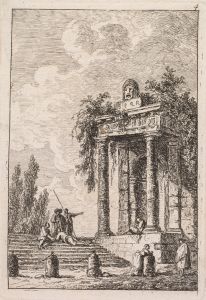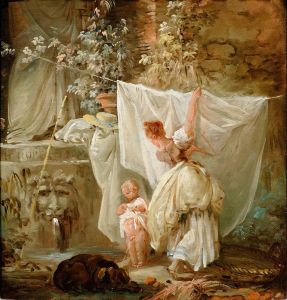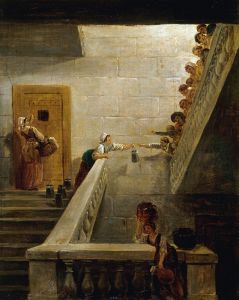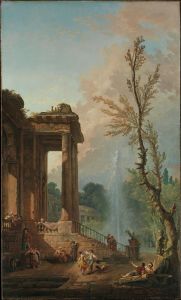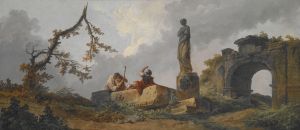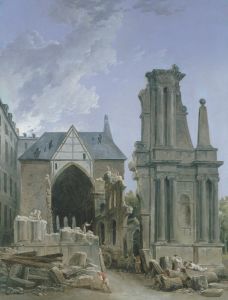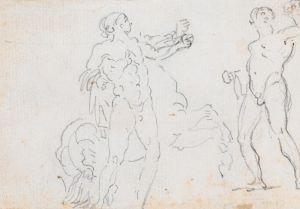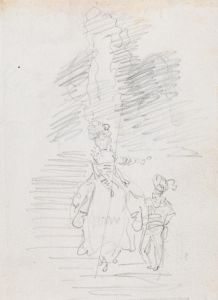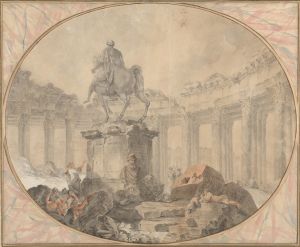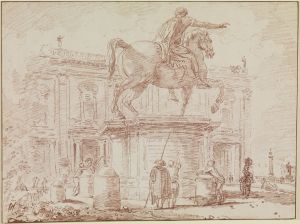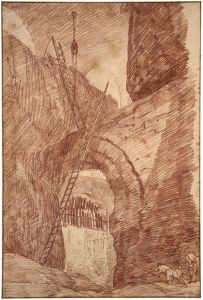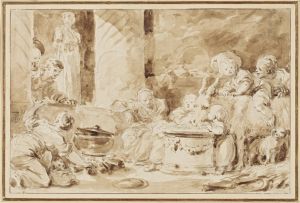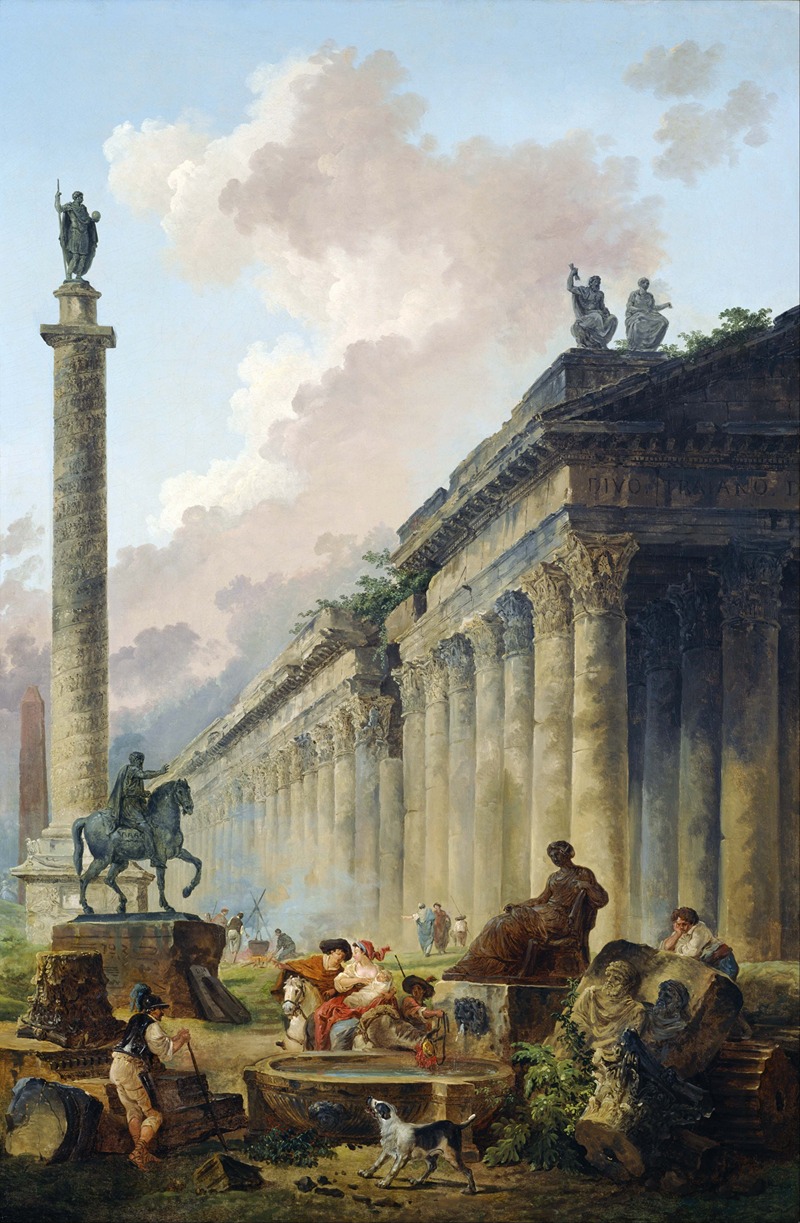
Imaginary View of Rome with Equestrian Statue of Marcus Aurelius, the Column of Trajan and a Temple
A hand-painted replica of Hubert Robert’s masterpiece Imaginary View of Rome with Equestrian Statue of Marcus Aurelius, the Column of Trajan and a Temple, meticulously crafted by professional artists to capture the true essence of the original. Each piece is created with museum-quality canvas and rare mineral pigments, carefully painted by experienced artists with delicate brushstrokes and rich, layered colors to perfectly recreate the texture of the original artwork. Unlike machine-printed reproductions, this hand-painted version brings the painting to life, infused with the artist’s emotions and skill in every stroke. Whether for personal collection or home decoration, it instantly elevates the artistic atmosphere of any space.
Imaginary View of Rome with Equestrian Statue of Marcus Aurelius, the Column of Trajan and a Temple is a painting by the French artist Hubert Robert, known for his landscapes and capriccios, which are architectural fantasies that combine real and imagined elements. Hubert Robert, born in 1733 and died in 1808, was a prominent figure in the 18th-century art world, particularly recognized for his ability to blend historical accuracy with creative imagination.
This painting is a quintessential example of Robert's skill in creating capriccios. It features an imaginative view of Rome, a city that has long been a source of inspiration for artists due to its rich history and architectural grandeur. In this work, Robert combines several iconic Roman landmarks into a single, cohesive scene, despite the fact that these elements do not coexist in reality as depicted.
The painting prominently features the Equestrian Statue of Marcus Aurelius, one of the few surviving bronze statues of a pre-Christian Roman emperor. The statue is historically significant and is currently located in the Capitoline Museums in Rome. It was mistakenly believed to represent Constantine the Great during the Middle Ages, which contributed to its preservation.
Another key element in the painting is the Column of Trajan, a monumental structure that was completed in 113 AD to commemorate Emperor Trajan's victory in the Dacian Wars. The column is renowned for its spiral bas relief, which artistically narrates the story of the wars. It stands in Trajan's Forum in Rome and remains one of the most celebrated examples of Roman triumphal architecture.
In addition to these historical elements, Robert includes a temple in the composition. While the specific temple depicted is not identifiable as a real structure, it serves to enhance the classical ambiance of the scene, reflecting Robert's fascination with ancient Roman architecture and his ability to evoke the grandeur of the past.
Hubert Robert's work often reflects the Enlightenment-era interest in antiquity and the ruins of Rome, which were seen as symbols of the transience of human achievement and the enduring nature of art. His paintings were popular among collectors and art patrons who were captivated by the romanticism and historical depth of his compositions.
Imaginary View of Rome with Equestrian Statue of Marcus Aurelius, the Column of Trajan and a Temple exemplifies Robert's talent for merging historical accuracy with imaginative creativity. It invites viewers to explore a fantastical version of Rome, where time and space are fluid, and the grandeur of the ancient world is brought vividly to life. This painting, like many of Robert's works, serves as a testament to his enduring legacy as a master of architectural fantasy and a keen interpreter of the past.





